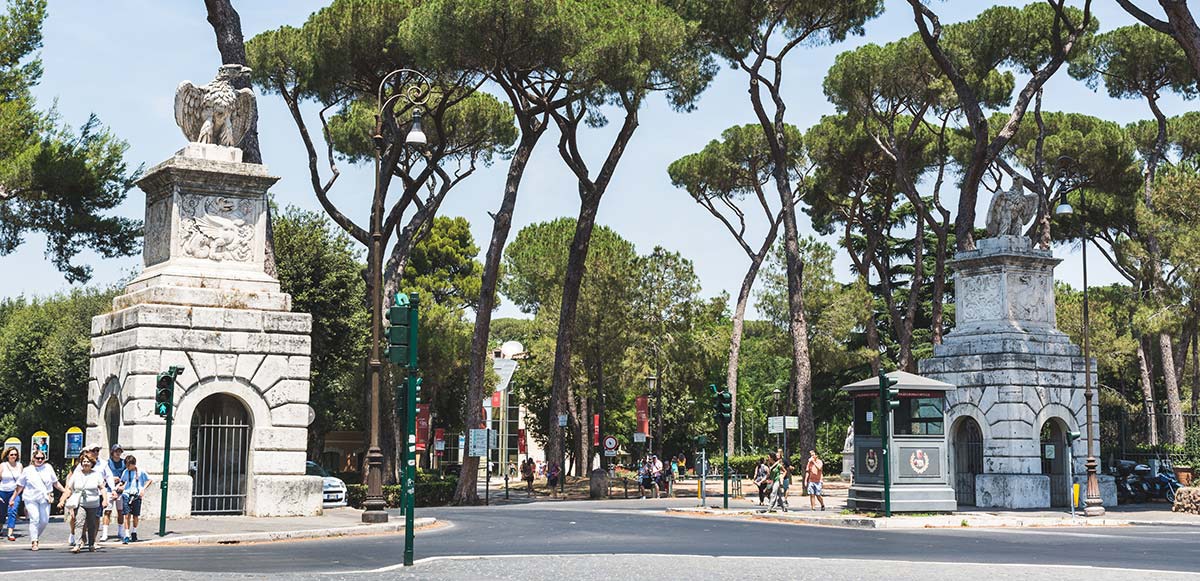
Roma It is beautiful all year round, but as many of its attractions are outdoors, spring or autumn are the best seasons to fully enjoy it. So, after this winter, how about going to Rome and walking through the Villa Borghese?
Park, garden, fountains, ponds, buildings of different styles, museums and other attractions, you will find all that in this corner of Rome.
Villa Borghese
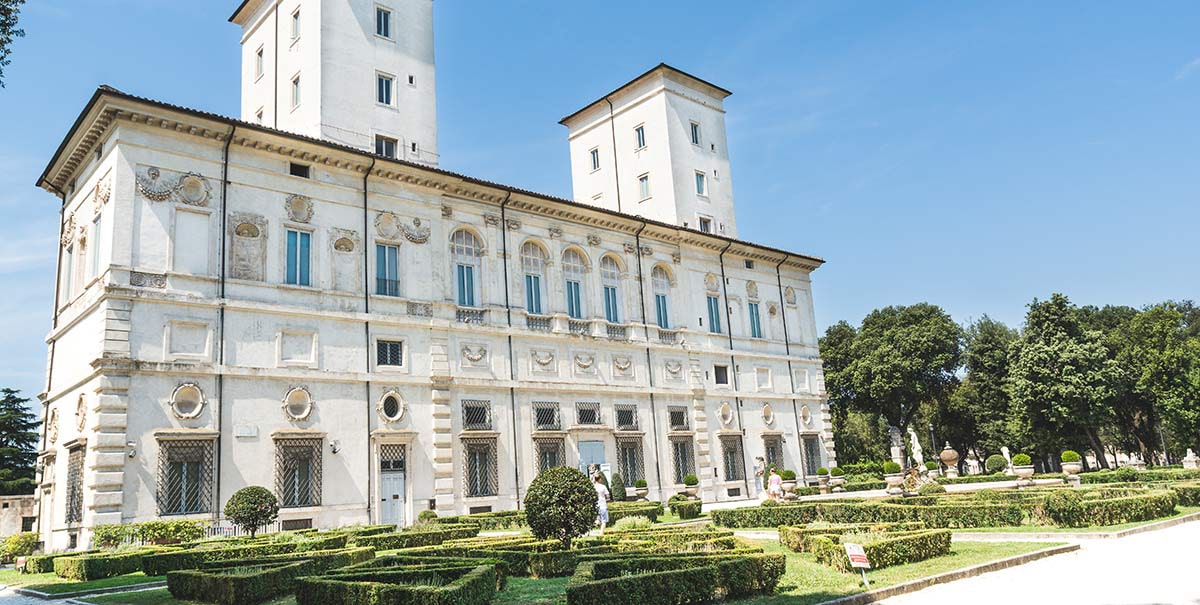
It is currently on a hill that has been reforested, adjacent to Mount Pincio, and the morphology began to take shape in the early seventeenth century at the hands of Cardinal Borghese, nephew of Pope Paul V and great patron of Bernini, the sculptor. Many renowned artists worked on the project and by 1633 the villa was ready.
During the second half of the XNUMXth century, the so-called Noble House, today the Borghese Gallery, and the Water Games House, today the Carlo Bilotti Museum, were completed. The Lake Garden also took shape.
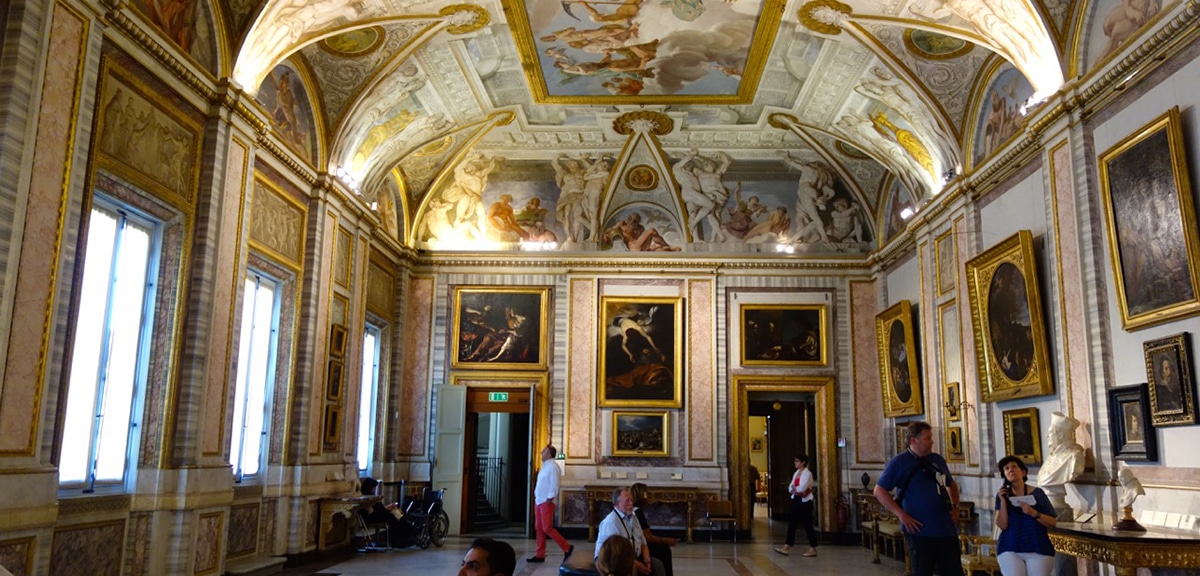
Two centuries later the size of the town grew and eventually a typical english garden. At the beginning of the twentieth century, the always rich Borhese family saw their fortune tremble and decided to sell the land and all its valuable content to the State, which passed it on to the Rome City Council, which ultimately opened it to the public for good.
The park is shaped like a heart, if you see it from the sky, and it is between Piazzale Flaminio, the salary neighborhood and Porta Pinciana. Its 80 hectares of beauties that you can visit in a walk of around two hours or more visiting historic buildings, outdoor structures, museums, monuments, fountains, lakes, gardens and lakes.
Practical information for visiting the Villa Borghese
- From Termini, take metro line A and get off at Flaminio. You walk about 500 meters and you already have access to the villa. Buses 88, 490, 495, 160, 910, 52, 53, 628, 926, 223 and 217 also drop you off; and the same is the tram 19, 3 and 2.
- The park is open from sunrise to sunset.
- Admission is free and you only pay for the museums or buildings you want to visit.
What to visit at Villa Borghese
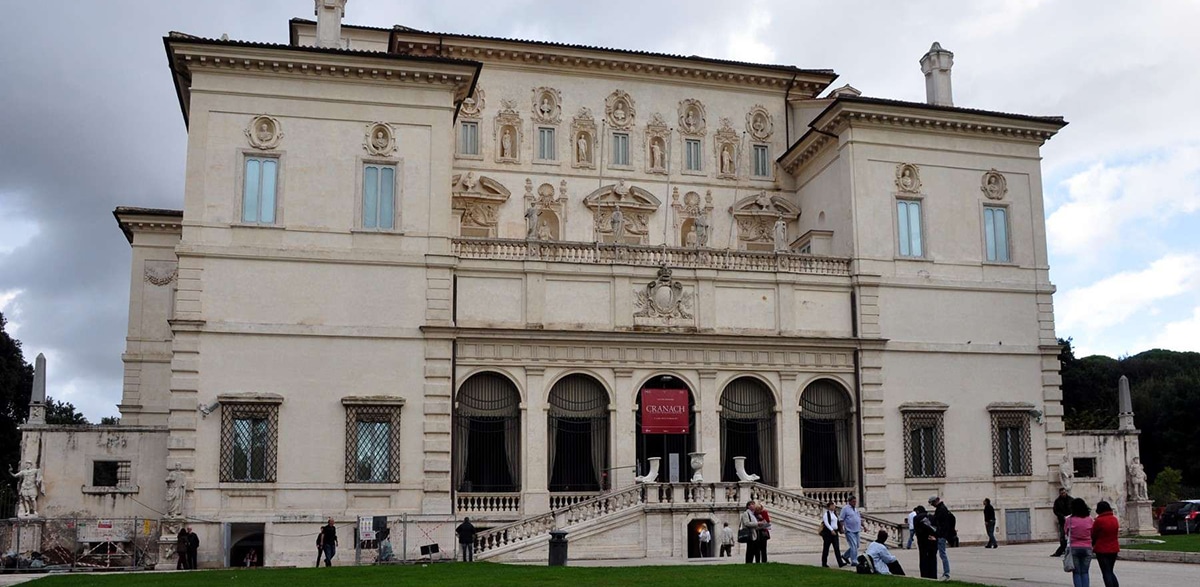
La Borghese Gallery It is an art museum that you cannot miss because it is one of the best museums in the world. The collection was started by Cardinal Borghese, Paul V's nephew, between 1576 and 1633. Here you will see works by Bernini, as he was his first patron, and also a valuable collection of Caravaggio.
The building has two floors. The main floor has all the classic antiques and it is a wonderful site as there are pieces from the XNUMXst to XNUMXrd century AD among wonderfully well preserved sculptures, mosaics and frescoes. The upper floor has the gallery with works signed by Rubens, Bottticelli, Raphael and Titian.
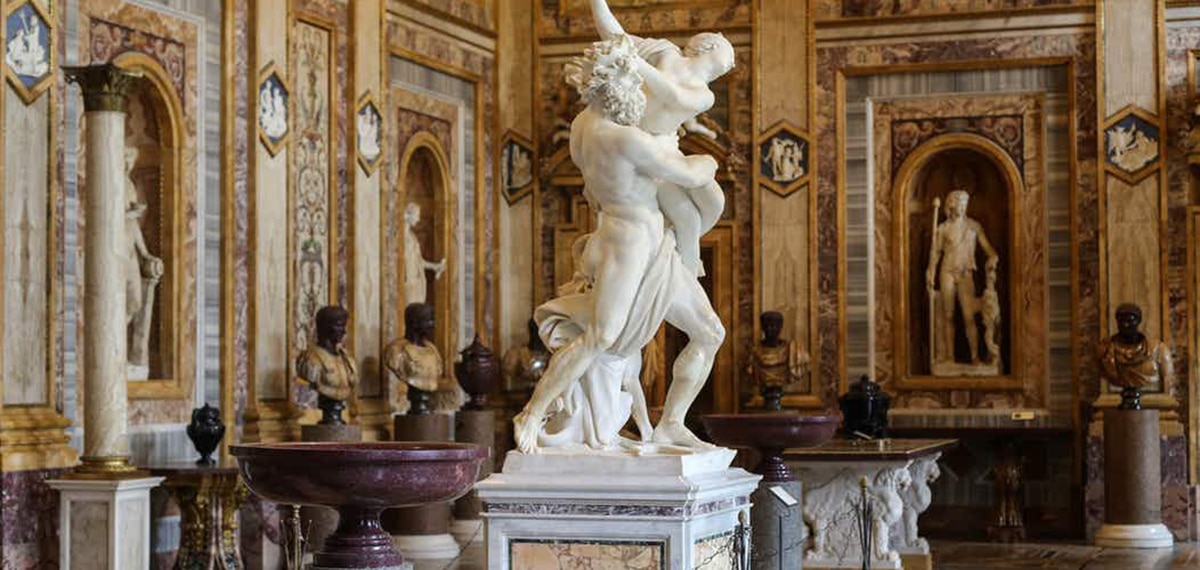
All the sculptures by Canova and Bernini they are pearls here and there. Of course, do not launch the visit overnight, you must reserve Well, there are many visitors. The reservation can be made online or by phone and several days in advance. The Borghese Gallery is open Tuesday through Sunday from 8:30 am to 7:30 pm and It costs 20 euros.
Beyond its content, the building itself deserves a closer look. It was designed by the architect Flaminio Ponzio to be the cardinal's suburban villa. At his death the works were continued by Vasanzio who added decoration to the original design. At that time it was a beautiful recreational site, with streams, lakes, walks, peacocks, ostriches ...
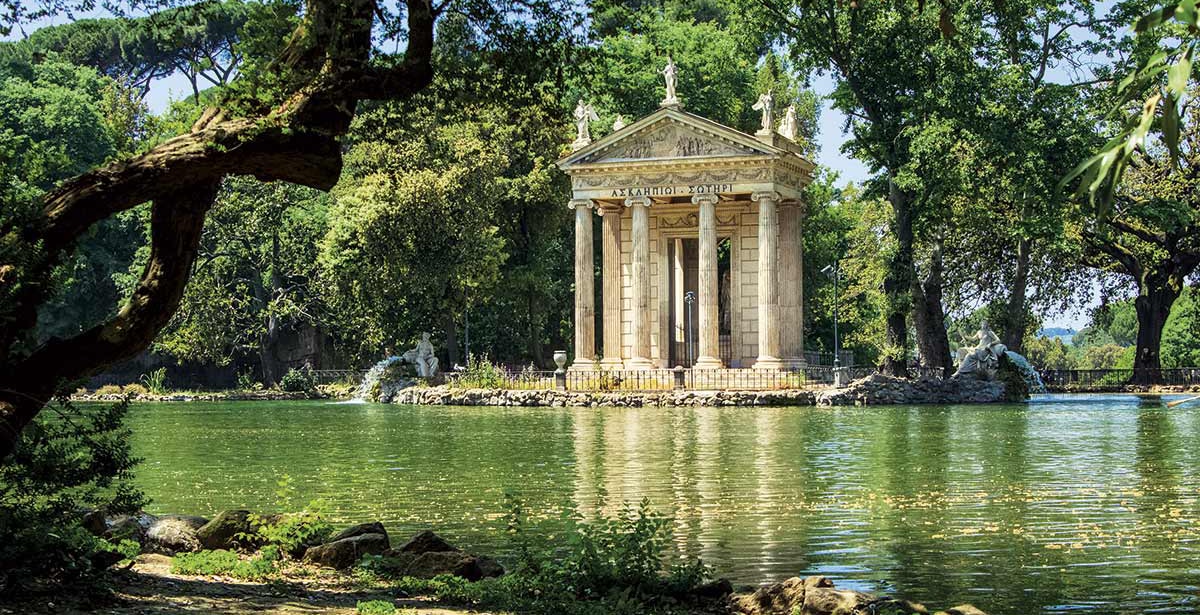
Other buildings that you can see are the Meridiana, the Casino del Graziano, the Casino dell'Orologio, the Casino Nobile or the Portezzuola, for example. They are historical constructions and we can add the Casa Giustiniani, the Pajarería or the Solar Clock with its secret gardens.
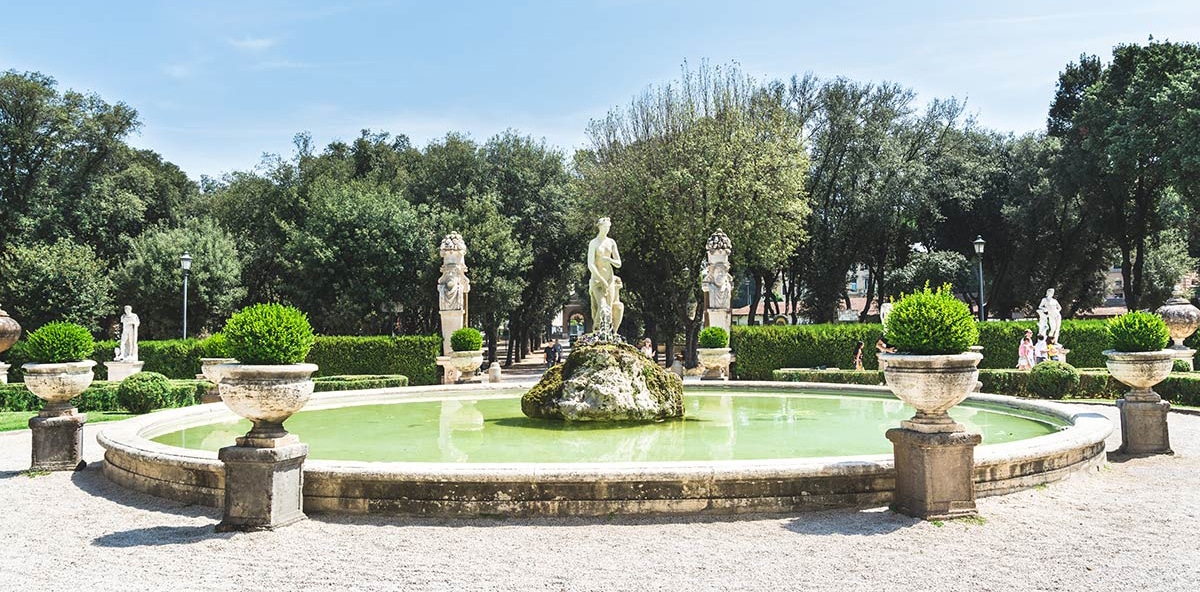
That's right, these buildings have their own lovely little gardens. Among them are the aforementioned Secret Gardensbut also the Valley of the Bananas, the Plazoleta Garden of Scipione Borghese or the beautiful Lake Garden with its beautiful colonnaded Temple of Aesculapius. The latter is one of the neoclassical and XNUMXth century buildings in the town, such as Orologio, Casa del Reloj or La Prqueña Fortaleza.
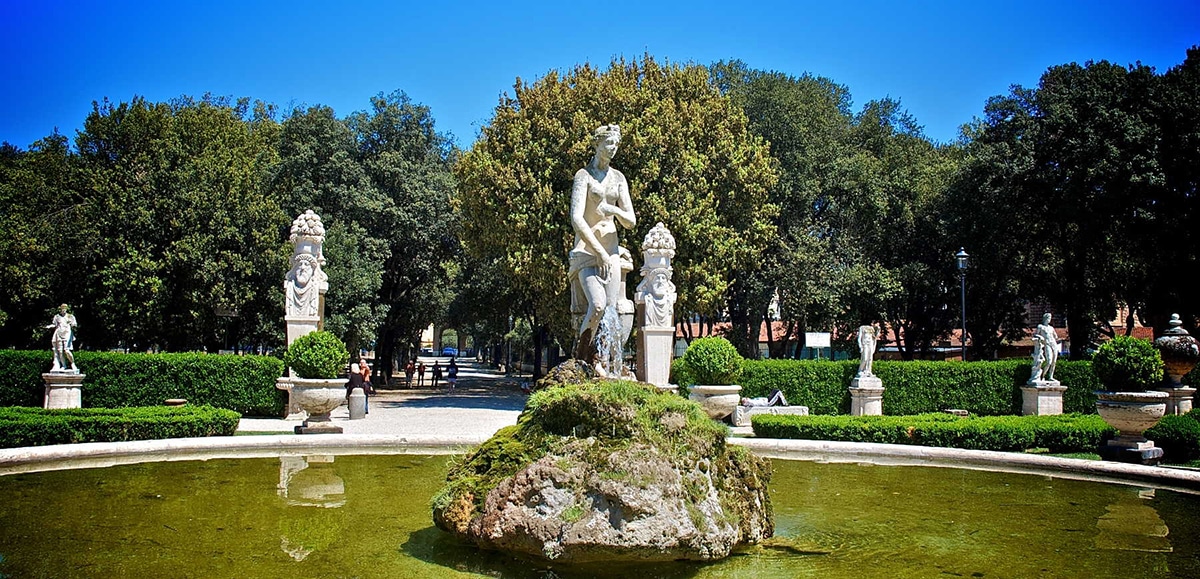
They add up various sources such as the Fontana dei Cavalli Marini, the Fontana del Fiocco, the Dark Fountain or the Fontana dei Pupazzi. There is also the Museo Canonica, which is the studio house of Pietro Canonica, an artist, the Casa de las Rosas or the Casa del Cine. If you go with children you can visit the Casa de Raffaello, with its children's playroom, or if you like animals there is the Rome Zoo or Bioparco with more than a thousand animals of 200 different species. It is one of the largest and oldest zoos in Italy, born in 1911.
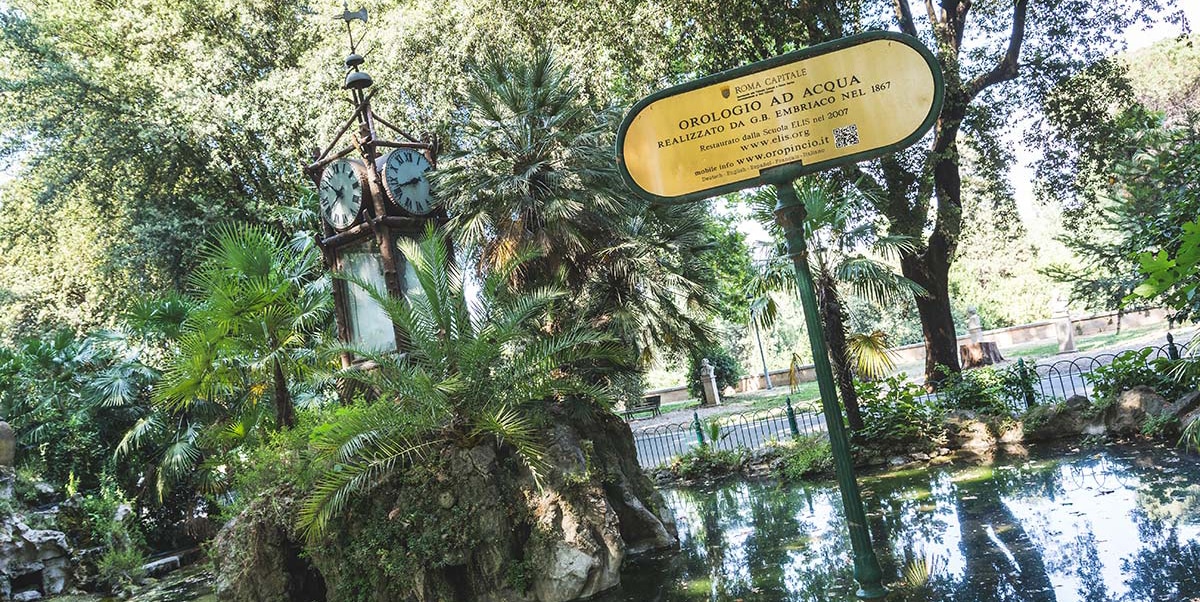
It opens all year round, seven days a week except December 25 and the general hours are from 9:30 am. Entry costs 16 euros per adult. You can buy tickets online. On the other hand, another of the most relevant attractions is the Pincio Water Clock, a marvel of XNUMXth century engineering.
In this hydro-clock that was built in 1867 by a Dominican priest who loves watchmaking, Giambattista Embriaco, together with the Swiss architect Joarchim Ersoch. The amazing thing is that still in full operation since its presentation at the famous Universal Exposition in Paris in 1867.
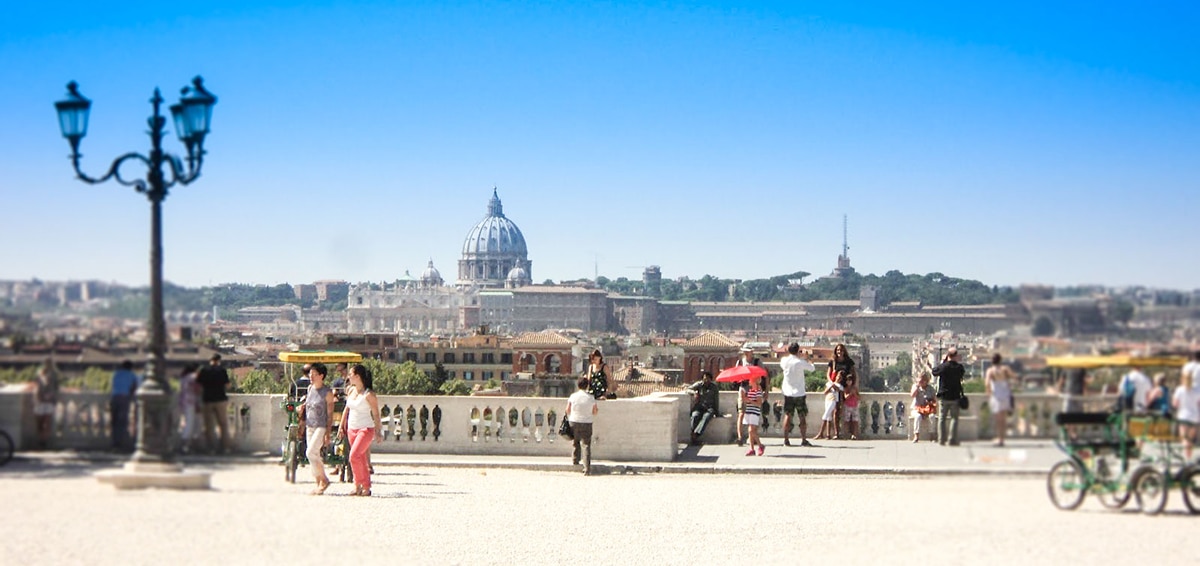
You will also see a replica of Shakespeare's Globe Theater in London, the Silvano Toti Globe Theater, a huge circular pavilion from Elizabethan times, a multitude of temples and pavilions, squares and fountains. And obviously, I think that the highlight of the tour has to be the Pincio garden since from here you have wonderful views of the city of Rome.
Remember that Villa Borghese has nine entrances located between Via Pinciana, Raimondi, Aldrovandi, Piazzale San Paolo del Brasile, Piazzale Flaminio and Piazzale Cervantes. Turn arround!